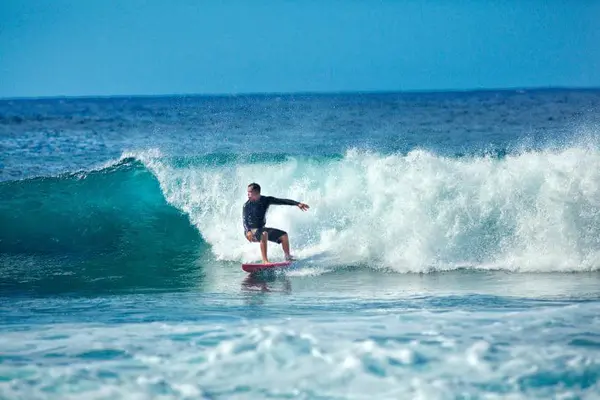Surfing, a sport that originated in Polynesia, has grown to become a global phenomenon. This article explores the journey of surfing from its roots to its introduction to various countries around the world. The spread of surfing involved cultural exchanges, exploration, and the efforts of passionate individuals who brought the sport to new shores.
The Origins of Surfing
Surfing began in Polynesia, particularly in Hawaii. Ancient Polynesians used surfing as both a recreational activity and a way to demonstrate their prowess and social status. The sport was deeply intertwined with their culture and way of life. When European explorers, such as Captain James Cook, arrived in Hawaii in the 18th century, they documented the locals riding waves on wooden boards, marking the first Western encounter with surfing.
Hawaii: The Cradle of Modern Surfing
Hawaii played a crucial role in the development and global spread of surfing. The Hawaiian Islands provided the perfect environment for surfing with their consistent waves and warm waters. In the early 20th century, surfing began to gain attention beyond the Hawaiian Islands. Duke Kahanamoku, an Olympic swimmer from Hawaii, is often credited with popularizing the sport. He traveled extensively, showcasing surfing and teaching people how to ride waves.
Surfing Reaches California
California is one of the first places outside Hawaii where surfing took root. In the early 1900s, Hawaiian surfers, including Duke Kahanamoku, visited California and demonstrated the sport. Their performances attracted local interest, and soon, Californian beaches became hotspots for surfing. The mild climate and excellent surf conditions in California helped the sport grow rapidly.
Australia Embraces Surfing
Australia has a rich surfing culture that dates back to the early 20th century. Hawaiian surfers like Duke Kahanamoku also played a significant role in introducing surfing to Australia. Kahanamoku’s visit to Sydney in 1914 is often cited as a pivotal moment. He gave surfing exhibitions at Freshwater Beach, inspiring Australians to take up the sport. Over time, surfing became an integral part of Australian coastal life.
The Rise of Surfing in Europe
Surfing’s introduction to Europe came later than in the United States and Australia. The sport began to gain popularity in the 1950s and 1960s. France was one of the first European countries to embrace surfing, with the Biarritz region becoming a popular surf destination. The warm climate and consistent waves attracted surfers from across the continent. Surfing culture spread to other European countries, including Spain, Portugal, and the United Kingdom, where it continues to thrive.
South Africa’s Surfing Scene
South Africa’s introduction to surfing was influenced by its extensive coastline and favorable surfing conditions. In the mid-20th century, South Africans began to embrace the sport, and it quickly grew in popularity. The country’s iconic surf spots, such as Jeffrey’s Bay, became internationally renowned. South Africa has produced many world-class surfers, further cementing its place in the global surfing community.
Surfing in Japan
Japan’s relationship with surfing began in the 1960s. The country’s coastal regions provided suitable conditions for the sport, and it started to attract a dedicated following. Japan’s unique surfing culture blends traditional Japanese aesthetics with modern surfing techniques. The country has hosted international surfing competitions, contributing to its growing popularity.
See Also: Where to Learn Shield Surfing
Surfing in Latin America
Latin America has a diverse range of surf destinations, from Mexico to Chile. The sport was introduced to these regions through the influence of American and Australian surfers traveling and sharing their passion. Countries like Peru and Brazil have vibrant surfing communities and host international competitions. The warm waters and consistent waves make Latin America a prime destination for surfers.
Conclusion
Surfing’s introduction to other countries is a testament to its universal appeal and the passion of those who love the sport. From its roots in Polynesia to the beaches of California, Australia, Europe, South Africa, Japan, and Latin America, surfing has become a global cultural phenomenon. The spread of surfing has been driven by cultural exchanges, exploration, and the efforts of individuals who have shared their love for riding waves. As surfing continues to grow, it brings people together from all corners of the globe, united by their love for the ocean and the thrill of the ride.
FAQ: How Was Surfing Introduced to the Other Countries?
Q: When did surfing become popular internationally?
A: Surfing gained popularity outside of Hawaii in the 1920s and 1930s when surfers from California began traveling to Hawaii to learn the sport. The first surf competition was held in 1928 in Hawaii, attracting international attention.
Q: How has surfing evolved over time?
A: Surfing has evolved significantly over time, with advances in equipment technology, such as lighter boards and wetsuits, making the sport more accessible and enjoyable. Today, surfing is enjoyed by millions of people around the world and is recognized as an Olympic sport.

